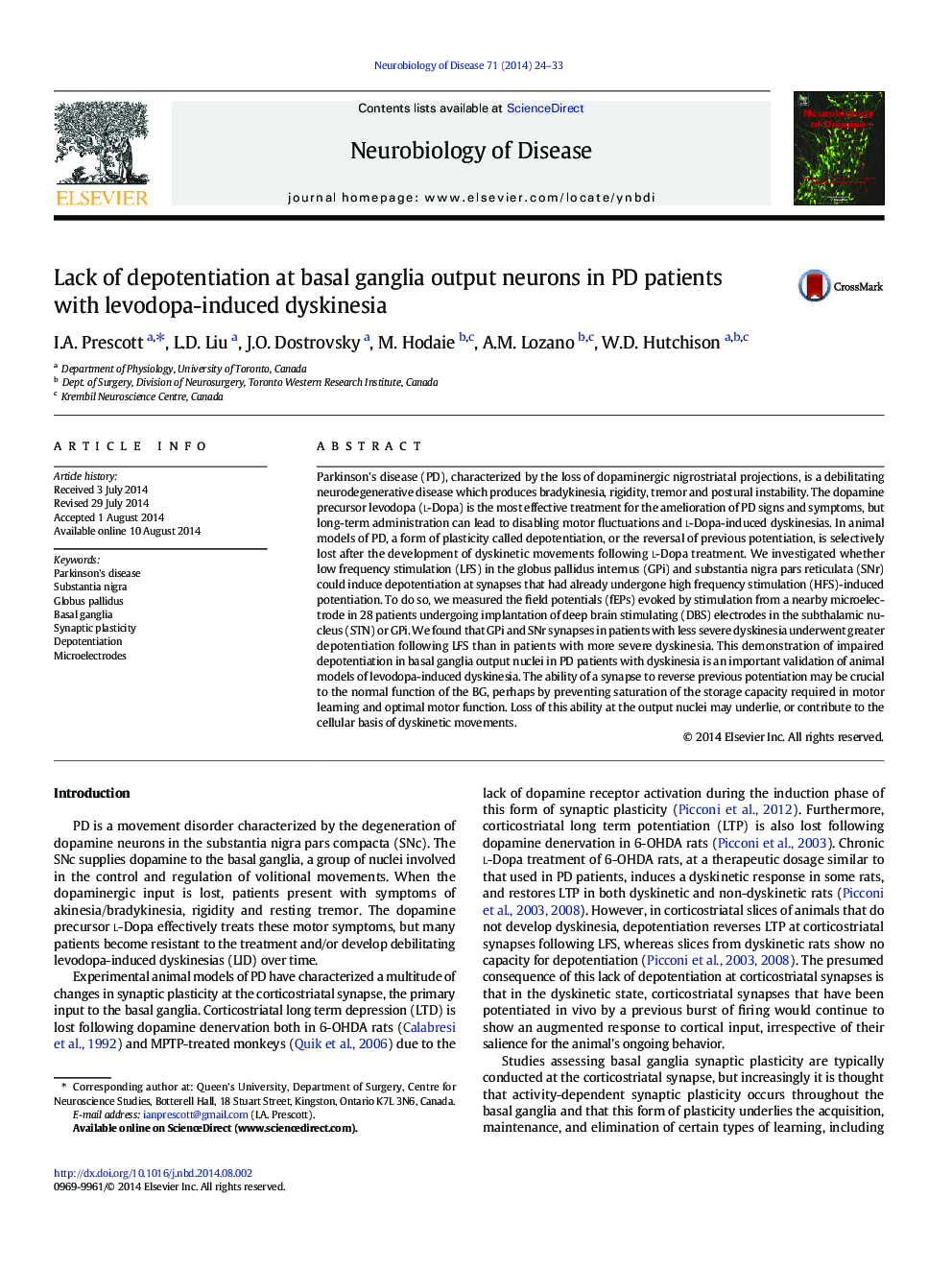| کد مقاله | کد نشریه | سال انتشار | مقاله انگلیسی | نسخه تمام متن |
|---|---|---|---|---|
| 6021793 | 1580653 | 2014 | 10 صفحه PDF | دانلود رایگان |
- Synaptic plasticity is measured in SNr & GPi of PD patients.
- L-Dopa potentiates fEP amplitudes following HFS in the SNr & GPi of PD patients.
- We demonstrate impaired depotentiation in SNr & GPi of PD patients with dyskinesia.
- Dyskinesia severity correlates to reversibility of fEP potentiation.
Parkinson's disease (PD), characterized by the loss of dopaminergic nigrostriatal projections, is a debilitating neurodegenerative disease which produces bradykinesia, rigidity, tremor and postural instability. The dopamine precursor levodopa (L-Dopa) is the most effective treatment for the amelioration of PD signs and symptoms, but long-term administration can lead to disabling motor fluctuations and L-Dopa-induced dyskinesias. In animal models of PD, a form of plasticity called depotentiation, or the reversal of previous potentiation, is selectively lost after the development of dyskinetic movements following L-Dopa treatment. We investigated whether low frequency stimulation (LFS) in the globus pallidus internus (GPi) and substantia nigra pars reticulata (SNr) could induce depotentiation at synapses that had already undergone high frequency stimulation (HFS)-induced potentiation. To do so, we measured the field potentials (fEPs) evoked by stimulation from a nearby microelectrode in 28 patients undergoing implantation of deep brain stimulating (DBS) electrodes in the subthalamic nucleus (STN) or GPi. We found that GPi and SNr synapses in patients with less severe dyskinesia underwent greater depotentiation following LFS than in patients with more severe dyskinesia. This demonstration of impaired depotentiation in basal ganglia output nuclei in PD patients with dyskinesia is an important validation of animal models of levodopa-induced dyskinesia. The ability of a synapse to reverse previous potentiation may be crucial to the normal function of the BG, perhaps by preventing saturation of the storage capacity required in motor learning and optimal motor function. Loss of this ability at the output nuclei may underlie, or contribute to the cellular basis of dyskinetic movements.
Journal: Neurobiology of Disease - Volume 71, November 2014, Pages 24-33
